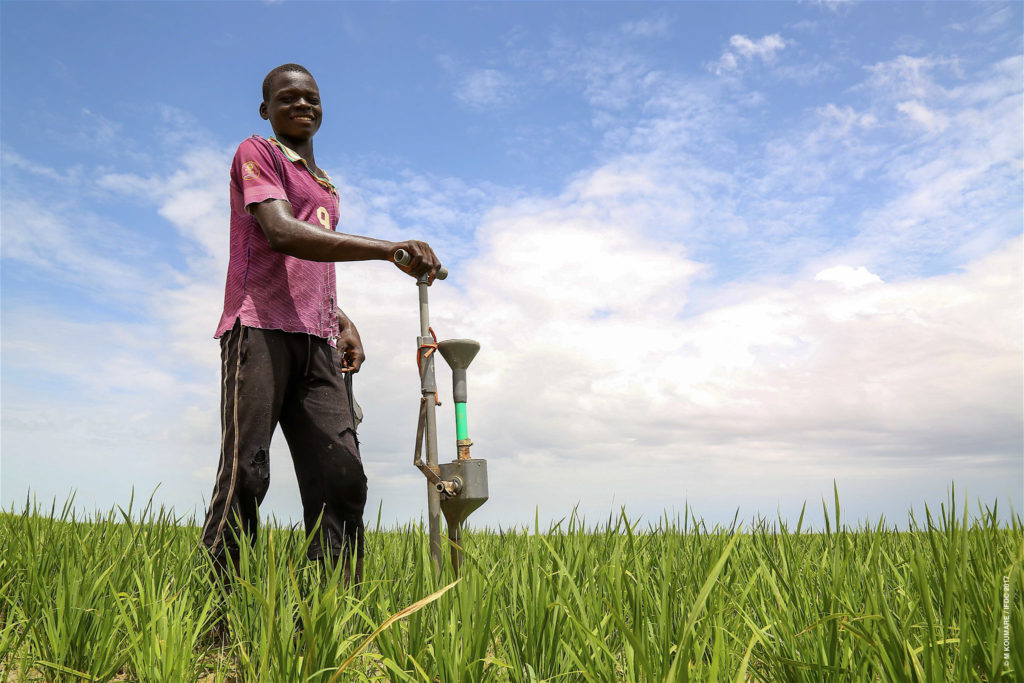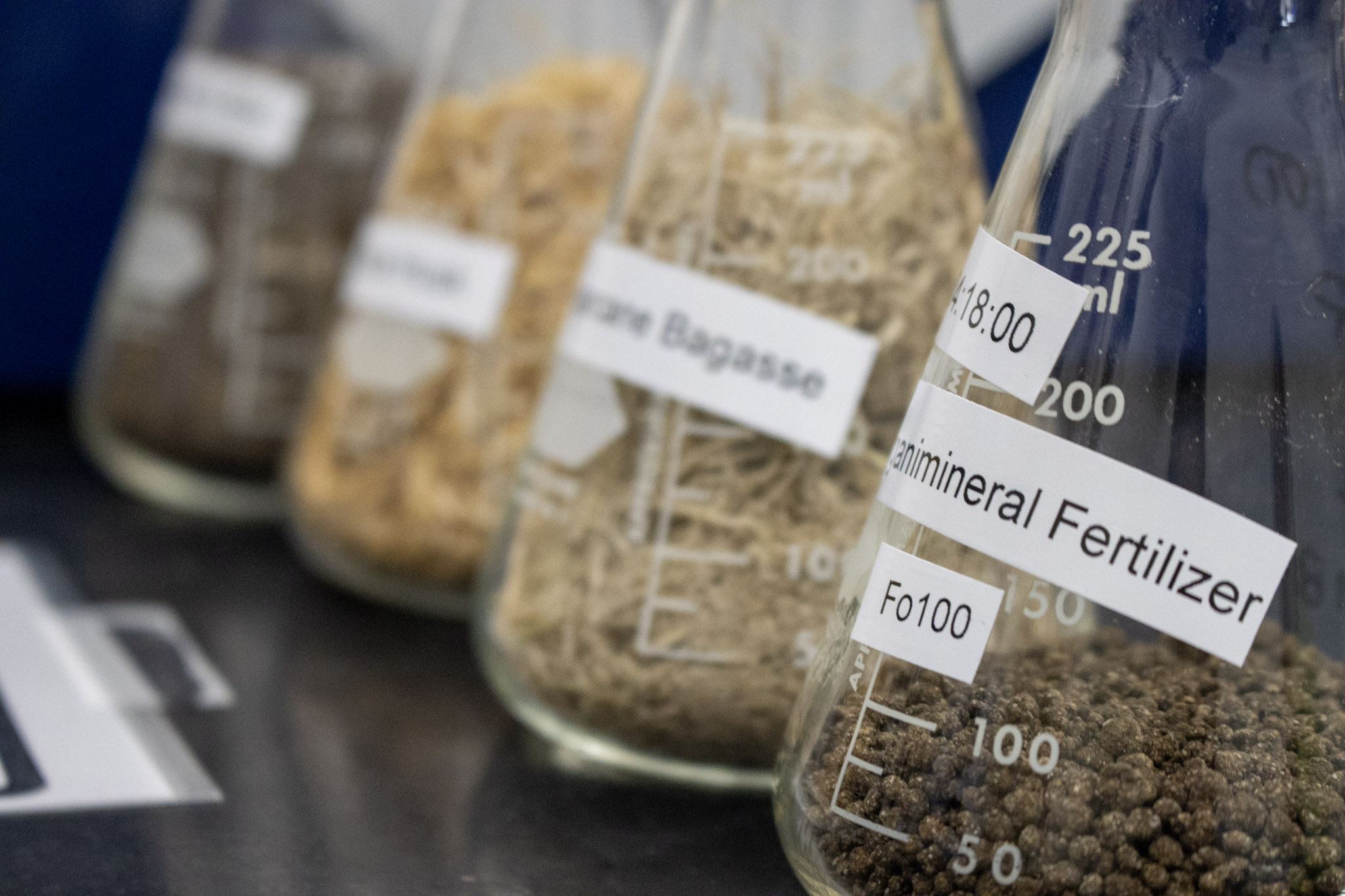Welcome to the Fertilizer FAQs page. This resource provides answers to frequently asked questions about fertilizers and their importance in sustainable agriculture.
Better understand the essential role fertilizers play in global food systems and how they are a critical tool for farmers around the world, enabling them to grow more food on less land while preserving natural resources.
What Are Fertilizers?
Fertilizers are like food for plants. They provide essential nutrients that plants need to grow, thrive, and be productive. The three main nutrients in most fertilizers are:
- Nitrogen (N) – helps plants grow leaves and stems

- Phosphorus (P) – provides energy for strong roots and flowering
- Potassium (K) – boosts disease resistance and improves plant strength
These three nutrients are often combined in varying ratios into NPK fertilizer blends. Plants also need secondary nutrients, such as sulfur, calcium, and magnesium, and micronutrients, such as zinc, iron, and copper, though in smaller amounts.
Fertilizers can be:
- Organic (e.g., manure, compost)
- Mineral/Synthetic (e.g., urea, ammonium nitrate, NPK blends)
- Organo-Mineral (i.e., a combination of both organic and mineral nutrients for balanced soil health)
All fertilizers, organic and mineral, ultimately provide nutrients in the same elemental form that plants can absorb.
Why Do We Need Fertilizers?
As crops grow and are harvested, they remove nutrients from the soil. Without replacing those nutrients, soil fertility declines, and food production suffers.
For example, it takes approximately 1 kilogram of nitrogen to grow 10 to 15 kilograms of grain. However, most tropical soils can naturally support only about 1 metric ton, or about 1,000 kilograms, of grain per hectare without the addition of external nutrients.

To grow more food, we must replenish what the soil loses, either through organic or mineral fertilizers. Without them, production stagnates and hunger increases.
What Are the Different Forms That Fertilizers Come in?
Fertilizers come in various forms, each offering unique benefits for soil health and crop productivity. Mineral fertilizers are industrially produced from natural sources: nitrogen from the air and phosphorus and potassium from mined minerals.
They provide nutrients in highly concentrated and precise forms, making them efficient and easy to tailor to specific crop needs. Mineral fertilizers are so efficient, in fact, that a 40pound bag of mineral fertilizer can deliver the same nutrient content as 800 pounds of manure.

Organic fertilizers, such as manure and compost, are derived from plant or animal materials and contribute to long-term soil health by adding organic matter to the soil. When combined with soil organic matter, mineral fertilizer enhances crop growth, which in turn increases the transfer of atmospheric carbon into the soil – supporting both productivity and carbon sequestration.
Organo-mineral fertilizers blend both mineral and organic sources, offering the advantages of controlled nutrient release and improved soil structure.
How Do You Use Fertilizers?
Fertilizers are most effective – and safest – when applied properly. While poor fertilizer practices can harm the environment, responsible use maximizes crop yields, improves nutrient use efficiency, and reduces greenhouse gas emissions.
The key to appropriate fertilizer application is to follow the 4Rs of Nutrient Stewardship: using the Right Source of nutrients and applying them at the Right Rate, at the Right Time for plant uptake, and in the Right Place to target plant roots rather than waterways. This approach ensures sustainable productivity while protecting ecosystems.

How Have Fertilizers Benefited the World?
Fertilizers have revolutionized agriculture:
- The International Fertilizer Association (IFA) estimates that mineral fertilizers are responsible for over half the food produced worldwide.
- The American Farm Bureau Federation estimates that one farm in the United States feeds more than 150 people annually.
The Green Revolution in Asia and Latin America, which lifted over 1 billion people out of hunger, was powered by improved seeds and fertilizer use. In contrast, Africa’s limited fertilizer use has led to land degradation and expanding agriculture into vulnerable ecosystems.

Aren’t Fertilizers Bad for the Environment?
Only when misused. Poor fertilizer practices – too much fertilizer, wrong timing, or bad placement – can pollute water, release greenhouse gases, and degrade ecosystems.

But using too few nutrients can be just as harmful. In the 1930s, nutrient-depleted soils in the United States led to the widespread erosion of the Dust Bowl, wherein low-productivity farming expanded into greater areas, converting fragile lands from nature for agriculture just to produce enough food.
Similarly, Africa loses over $4 billion in soil nutrients each year, with three-fourths of farmland suffering severe depletion.
The judicious use of fertilizer, on the other hand, supports the sustainable intensification of our most productive lands rather than expansion. Responsible fertilizer use helps restore soil and boost yields while protecting the environment and natural habitats of wildlife.
Have a Question about Fertilizer?

Subscribe to Our Newsletter
Subscribe to IFDC’s newsletter and get updates on our projects, partnerships, and impact delivered straight to your inbox.

Additional Resources
Explore IFDC’s publications, including annual reports, fertilizer market insights, staff research, and a wide range of additional resources.
